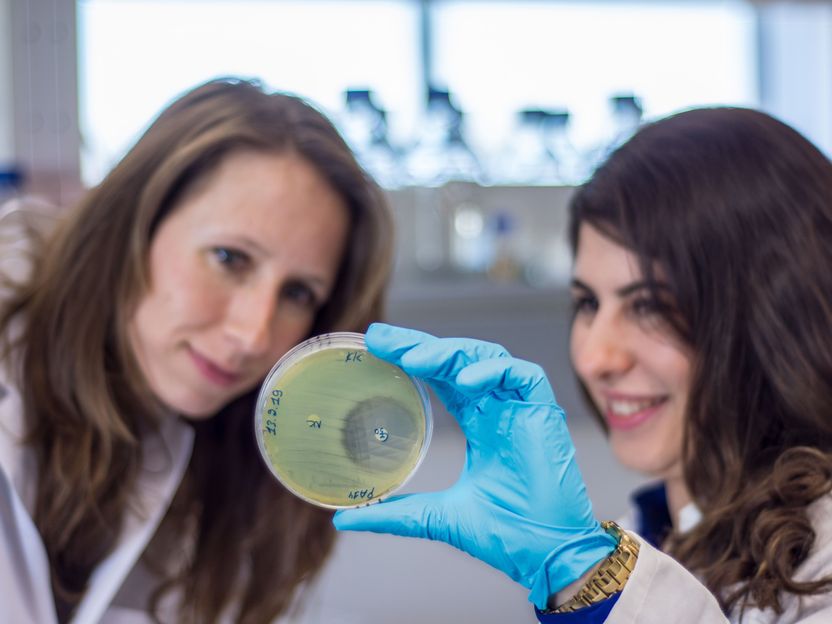Intestinal microbiota defend the host against pathogens
Advertisement
From single-celled organisms to humans, all animals and plants are colonised by microorganisms. As so-called host organisms, they accommodate a diverse community of symbiotic microorganisms, the microbiome, and together with them form the so-called metaorganism. The interactions between host and microbes exert a significant influence on diverse functions and health of the host organism. Scientists from the Collaborative Research Centre (CRC) 1182 "Origin and Function of Metaorganisms” at Kiel University (CAU) are investigating these complex interactions, and attribute an important role in the defence against pathogens to the microbiota. To do so, they use various experimental model organisms, i.e. living organisms which allow investigation of the interaction with their bacterial symbionts under laboratory conditions. A research team from the department of Evolutionary Ecology and Genetics at CAU has examined the function of the natural intestinal microbiome using the nematode (round worm) model Caenorhabditis elegans. They discovered that the natural C. elegans microbiome plays an important role in the defence against infections, and that certain bacteria produce a compound with a clear antimicrobial effect. In future, the results of the Kiel scientists could help to better understand the functions of the intestinal microbiome as a whole, and in particular its effects on the colonisation of the digestive tract by pathogens.

An agar plate demonstrates the inhibitory effect of Pseudomonas bacteria: The pathogen Bacillus thurigiensis cannot thrive next to them.
© Dr. Sabrina Köhler
Direct and indirect protection against infection
The Kiel team laid the foundation for the current research results a few years ago, when it presented the first systematic analysis of the natural worm microbiome. This investigation led to a detailed knowledge of the composition and the dominant species of the intestinal microbiome of the worm. At that time, the researchers hypothesised that the natural microbiome benefits host fitness, for example by protecting the host against pathogens. To gain a better understanding of the function of the worm microbiome, the researchers have now examined how individual bacteria from the former study affect the fitness of the host during pathogen infection. In doing so, they identified two distinct modes of action.
"On the one hand, we were able to determine a direct protective effect of certain bacteria against a pathogen," said Dr Katja Dierking, research associate in the department of Evolutionary Ecology and Genetics at CAU, and principle investigator in the CRC 1182. "Microbiota bacteria of the genus Pseudomonas inhibit the growth of the nematode specific pathogen Bacillus thuringiensis, if you put them in direct contact with each other," continued Dierking. In addition, the study of other microbiota bacteria of the genus Pseudomonas revealed an indirect effect: although they do not inhibit the growth of the pathogen directly, they nevertheless protect the worm against its harmful effects, likely through indirect, host-mediated mechanisms. The researchers found a total of six bacterial isolates in the natural microbiome which are involved in the defence against infections: two of them protect the worm directly against pathogens, and four of them indirectly.
How intestinal bacteria inhibit the growth of pathogens
Another special feature of the new Kiel study is that it not only describes the infection-inhibiting effect of individual bacteria of the worm’s microbiome, but was also able to identify an underlying molecular mechanism. Using genomic and biochemical analyses, the scientists from the Kiel CRC 1182 in collaboration with scientists from Goethe University Frankfurt were able to identify an antibacterial compound that is produced by the two Pseudomonas microbiota bacteria, which protect the worm by directly inhibiting pathogen growth. "The Pseudomonas bacteria produce a so-called cyclic lipopeptide," explained Kohar Kissoyan, first author of the study and doctoral researcher in the Evolutionary Ecology and Genetics group. "This chemical compound exerts a direct inhibitory effect on the pathogen, and thereby suppresses its further growth," continued Kissoyan.
How can we utilise the new findings?
The new results of the Kiel team establish C. elegans, which is a standard model organism studied in numerous research laboratories throughout the world, as experimental system to explore the various functions of the natural intestinal microbiome. Next, Dierking and her research team want to conduct a detailed investigation of the mechanism of action of the antibacterial compound identified in the worm’s intestinal microbiome. The goal of the CRC 1182 is to understand the interactions of the various bacteria of the microbiome with the host organism, but also with each other. In the long-term, the Kiel researchers hope that the gained knowledge will help in the development of therapeutic strategies to treat diseases related to disturbances of the intestinal microbiome, e.g. through the targeted use of probiotics, i.e. specific beneficial bacterial cultures. Currently, the Kiel metaorganisms CRC, which started in 2016, is applying for a second funding period as of 2020 at the German Research Foundation (DFG).




















































